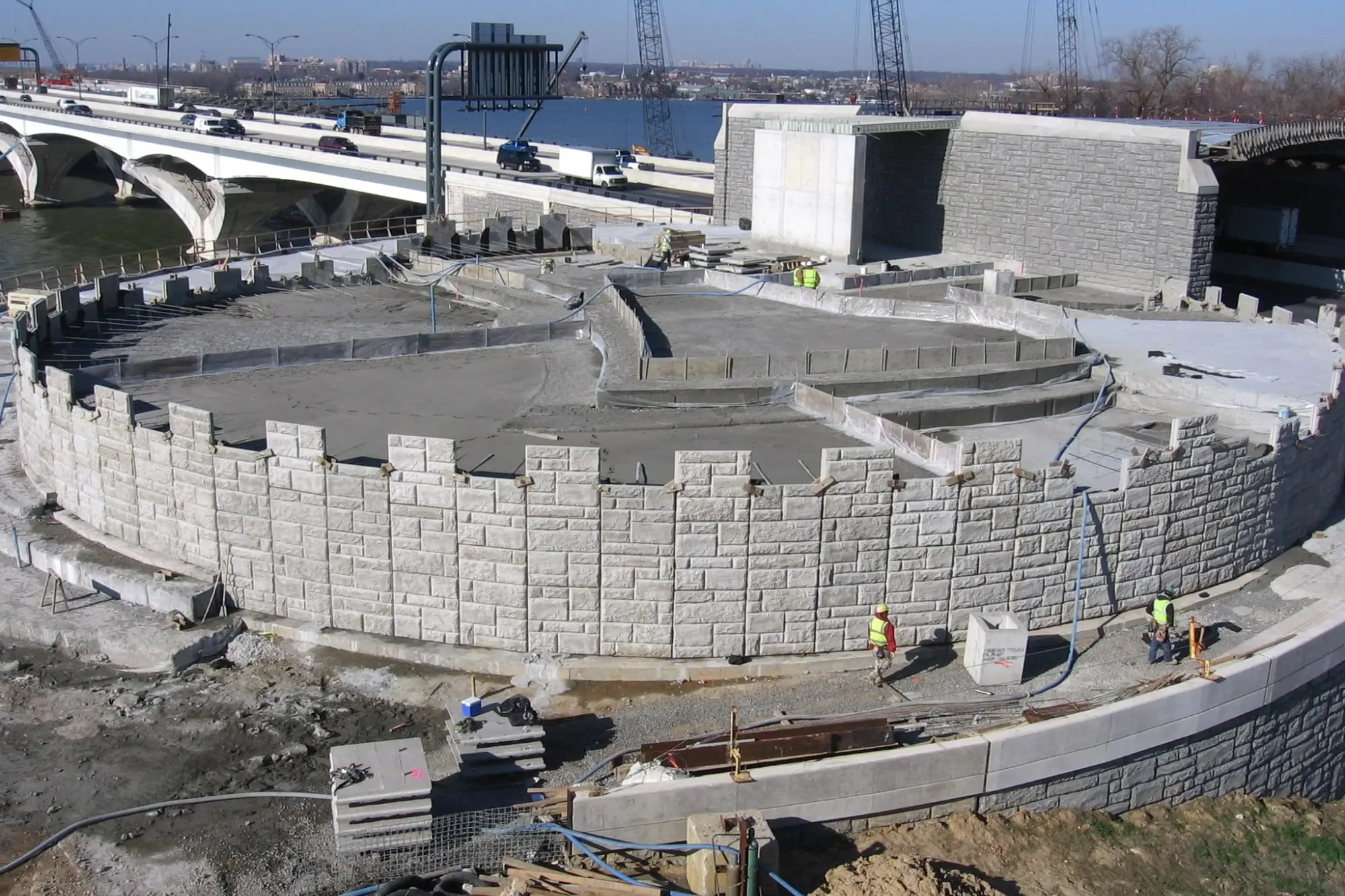
MSE Walls with Lightweight Cellular Concrete by Elastizell Systems
Mechanically Stabilized Earth (MSE) walls are a cornerstone of modern civil engineering, delivering the strength and stability essential for a wide range of infrastructure projects. At Elastizell Systems Inc., we specialize in enhancing MSE walls with Lightweight Cellular Concrete (LCC), offering a solution that is not only durable and cost-effective but also environmentally responsible.
What Are MSE Walls?
Mechanically Stabilized Earth (MSE) walls are engineered retaining structures that rely on layers of compacted backfill, reinforced with horizontal layers of geosynthetics or steel strips. These walls resist earth pressure through the frictional forces between the reinforcing material and the backfill, resulting in a stable and robust structure.
MSE walls are widely used in applications such as highway construction, bridge abutments, retaining walls, and other critical infrastructure projects due to their strength, flexibility, and ease of construction.
The Advantage of Lightweight Cellular Concrete
Lightweight Cellular Concrete (LCC) is a cutting-edge material known for its low density and superior thermal insulation properties. Elastizell Systems Inc. has perfected the use of LCC in MSE walls, delivering unparalleled benefits for your projects:
Reduced Load on Foundations
The lightweight nature of LCC significantly decreases the load on the underlying foundation. This is especially beneficial for projects where soil-bearing capacity is a concern. By minimizing the load, Elastizell Systems’ MSE walls reduce settlement issues, ensuring a more stable and durable structure.
Enhanced Durability
LCC used by Elastizell Systems is highly resistant to environmental factors such as moisture, freeze-thaw cycles, and chemical exposure. This makes our MSE walls exceptionally durable and capable of withstanding a wide range of challenging environments.
Cost-Effective Construction
The reduced weight of LCC lowers transportation and handling costs, making construction faster and more efficient. Elastizell Systems' MSE walls deliver substantial savings on large-scale projects without compromising on quality.
Superior Thermal Insulation
One of the standout features of LCC is its excellent thermal insulation. This property is particularly advantageous in MSE walls, where maintaining temperature stability is crucial for the longevity of the structure.
Sustainable and Eco-Friendly
At Elastizell Systems, we are committed to sustainable building practices. LCC requires less cement and emits lower carbon emissions during production compared to traditional concrete. Using LCC in MSE walls aligns with modern environmental standards and contributes to the overall sustainability of your project.
Technical Comparison: Lightweight Cellular Concrete vs. Other Materials
When it comes to choosing the right material for your MSE wall projects, here’s how Lightweight Cellular Concrete (LCC) stacks up against other common options:
Compared to EPS/Geofoam:
- Non-Combustible: LCC is non-combustible, unlike EPS/Geofoam, which is a fire hazard.
- Resistant to Petroleum Solvents: LCC resists damage from petroleum solvents, whereas EPS/Geofoam can degrade into a glue-like substance upon contact, compromising structural integrity.
- Insect Resistance: LCC is impervious to insect infestations, a common issue with EPS/Geofoam.
- Water Resistance: LCC does not absorb water once cured, unlike EPS/Geofoam, which can be prone to water absorption.
Compared to Expanded Aggregate:
- No Compaction Required: LCC does not require compaction, whereas expanded aggregates may need extensive compaction to achieve stability.
- Consistent Density: LCC is installed at a consistent density, unlike expanded aggregates, which can vary depending on compaction methods.
- Impervious to Freeze-Thaw Cycles: LCC is nearly impervious, reducing the risks associated with freeze-thaw cycles that can affect expanded aggregates.
Applications of MSE Walls with Lightweight Cellular Concrete by Elastizell Systems
Elastizell Systems' integration of Lightweight Cellular Concrete (LCC) into MSE walls is particularly beneficial in the following applications:
Highway and Bridge Construction
MSE walls reinforced with LCC provide essential support for highway embankments and bridge abutments, ensuring long-term stability and performance.
Retaining Walls for Slopes and Excavations
The lightweight properties of LCC make it ideal for retaining walls in areas with challenging soil conditions or where weight limitations are a concern.
Landscaping and Architectural Projects
MSE walls utilizing LCC are perfect for creating terraced landscapes, noise barriers, and other aesthetically pleasing structures, combining functionality with visual appeal.
Marine and Coastal Structures
The durability of LCC against harsh marine environments makes it an excellent choice for retaining walls and other structures exposed to saltwater and coastal conditions.
Industry Approvals and Expertise
Elastizell Systems Inc. is proud to have a long history of successful projects across the USA, with our Lightweight Cellular Concrete solutions being approved by leading wall manufacturers. Our expertise in this field ensures that your MSE wall projects benefit from the best in engineering and construction innovation.
Ready to Advance Your Project?
Contact Elastizell Systems today to leverage our expertise in Lightweight Cellular Concrete (LCC) for your MSE wall projects. Let our skilled engineers and experienced crews provide the innovative solutions you need to succeed.
Contact Us to get started with the industry leader in MSE wall construction.
Expertise You Can Trust
With decades of experience in providing effective solutions for MSE walls using Lightweight Cellular Concrete (LCC), we ensure superior performance and reliability.
Tailored LCC Solutions
Our custom LCC mixes are specifically designed to reduce the load on foundations and enhance the stability of MSE walls, ensuring optimal support and durability.
Civil Engineering Excellence
Our skilled civil engineers bring precision and expertise to every MSE wall project, ensuring the successful application of LCC for load-reducing and structural stability.
Seamless Project Management
From initial planning to final execution, we manage every aspect of the LCC application for MSE walls, delivering projects on time and within budget.
Durable, High-Quality Products
We use premium LCC materials to achieve long-lasting, reliable results in MSE wall applications, providing consistent performance and durability.
Versatile Applications
Our LCC solutions are adaptable for a range of applications in MSE walls, including embankments, retaining walls, and other structural uses, offering flexibility and efficiency.
